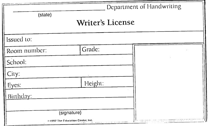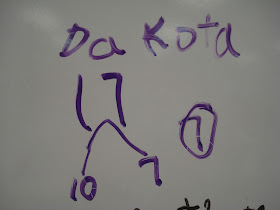(Forgive me. This will be my second post today. Technically it was supposed to show up on Saturday, but there's a bit of a time difference in Japan. No worries right?)
Even though my spring break is slipping through my little fingers, I'm thrilled about this day. For the first time ever, I'm a guest blogger! (And there was much rejoicing.) Natalie from Teacher Tidbits is traipsing through Japan and was sweet enough to let me say a few words on her blog while she's gone. I would absolutely love for you to read those thoughts. Click on the picture below to visit, and then please do come back to find out what this elephant business is all about.
I love to use music as a management tool. There's this little song, which I did not invent, that we sing. It's perfect for just that purpose. (It's also perfect for phonemic awareness reasons.) It goes like this...
It helps with management because I like to change the words to the song and sing about the kids who are doing what I've asked of them. It's a great motivator, because I don't particularly enjoy singing about kids who are off-task. The song might then go something like this: "Willoughby Walloughby Wailey. An elephant sat on Hailey." You get the idea, and kids do eat it up when their name ends up in the song.
We have also turned it into a book, which is a rather typical move for us.
Here's a copy of the paper we use in case you were hoping I'd share.
Whether you're new to my blog or are a faithful reader, thanks for dropping by. I relish every visit.

































